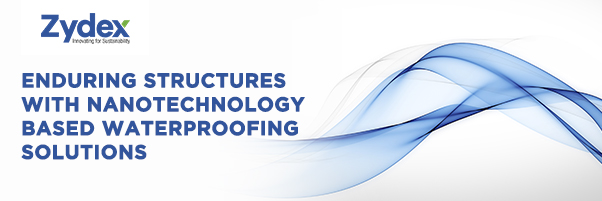The construction industry, along with other industries is responsible for generating enormous quantities of waste, in various forms. The huge amount of accumulated waste not only poses a threat to the atmosphere as most of it is difficult to recycle, but also consumes huge space for stocking. This along with the unrestrained and haphazard exploitation of mineral resources like stone, clay, lime, coal, sand that are used by the construction industry in large amounts, has led to a major impact on environment and climate change along with depletion of natural resources.
These factors have made it pertinent for the Construction and Infrastructure Industry to find ways and techniques to mitigate these perils by effecting innovative solutions and design structures that are not only captivating but ultra-durable. Easy on the environment to produce but durable enough not to become a victim to nature’ forces.
However, its easy said than done, as harsh weathering influences and water infiltration remain the major deterrents to enduring structures. Prolonged exposure to water causes accelerated ageing and damage to civil structures. Water infiltration causes both aesthetic and structural damage. Conventional waterproofing chemicals and waterproofing membranes form a barrier over these civil structures to prevent water ingress. However, they are incapable of penetrating the micro cracks and pore channels. With time, most of these waterproofing chemical products generally peel-off and crack on account of thermal and UV degradation, resulting in complete waterproofing failure as physical adhesion has its limitations.
The ineffectiveness of conventional waterproofing membranes on account of its impenetrable structure gave rise to the innovation of a new generation penetrative organosilane technology.
Understanding Nanotechnology
Nanotechnology, one of the most breakthrough innovations in the recent years, still remains an elusive subject since the common man is not exposed to the technology.
In the metric system of measurement, “Nano” equals a billionth and therefore a nanometer is one-billionth of a meter. Just to appreciate the size, a human hair is over 1,00,000 nanometers long; therefore, it is virtually outside the nanoscale range!
Nanotechnology based waterproofing
For the first time, a nanotechnology based waterproofing agent, has been developed.
This advance penetrative nanotechnology changes the basic nature of the structure from hydrophilic to hydrophobic making the water absorbing structure substrate, water resistant. This prevents water ingress in the structure and checks ageing of the structure.
The result is, significant life extension of the structures and optimized resource preservation.
The salient features of this new technology are:
- Long Useful Service Life (UV stability upto 20 years)
- Water Soluble – 20 times its volume (cutting transportation cost)
- Easy to Apply (colloquially speaking, is Idiot-proofed, eliminating misapplication)
- Eco-friendly (meets the toughest Californian VOC norms)
- Affordable (can be even considered for Low-cost mass housing)




